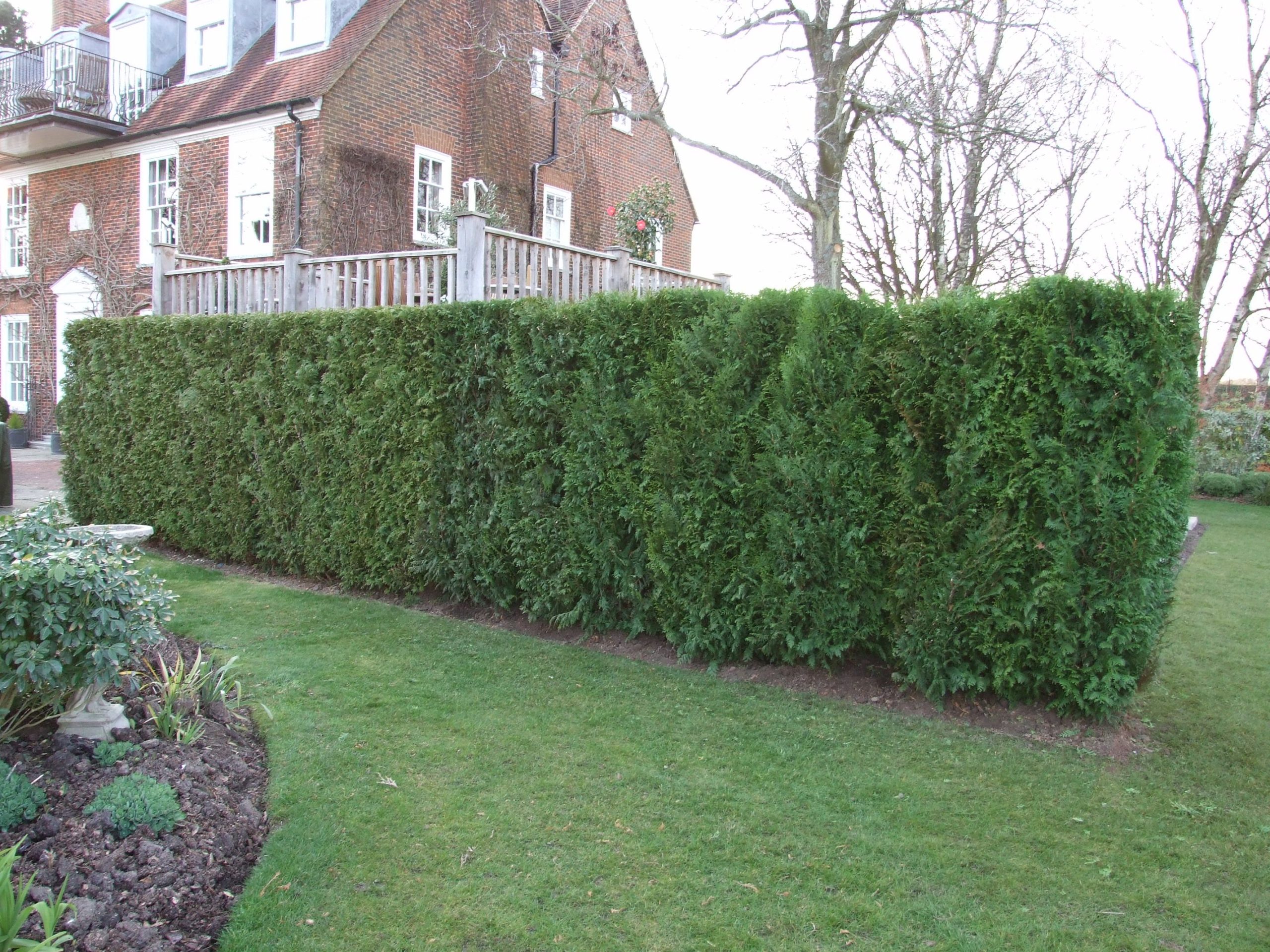For those seeking the perfect evergreen hedge, western red cedar deserves serious consideration. This tall, elegant conifer makes a striking living fence or boundary while providing excellent year-round privacy Here’s an in-depth look at using western red cedar as an exterior hedge
Overview of Western Red Cedar
With the botanical name Thuja plicata western red cedar is a large conifer native to the Pacific Northwest of North America. It’s a member of the cypress family and can reach towering heights of 60-100 feet in its native habitat. The foliage has a sweet, aromatic scent when crushed.
For hedging purposes, a dwarf cultivar called Thuja plicata ‘Virescens’ is used. This compact form grows up to 15 feet tall and 4-6 feet wide. It has dense, layered branching with short, flattened sprays of deep green scale-like leaves. Tiny brown cones appear in summer.
Benefits of Western Red Cedar Hedges
There are many advantages to choosing western red cedar for hedging and screens:
-
Provides excellent privacy and seclusion all year long.
-
Has a narrowly upright habit that requires minimal trimming.
-
Grows relatively fast, up to 2 feet per year.
-
Stays green and lush even in winter.
-
Tolerates pruning well to keep a neat, controlled size.
-
Has a rich, deep green color and graceful texture.
-
Gives an upscale, refined look compared to basic arborvitae.
-
Is deer and rabbit resistant due to aromatic foliage.
-
Grows well across a wide region from USDA zones 5-9.
-
Offers shelter and nesting sites for birds.
-
Has few pest or disease problems.
Tips for Growing Western Red Cedar Hedges
Here are some top care tips for successfully growing western red cedar hedges:
-
Plant in spring or fall in fertile, moisture-retentive soil. Avoid overly wet or dry sites.
-
Space plants 2-3 feet apart to form a tight hedge. Stagger plants in rows for the fullest coverage.
-
Water regularly the first 2 years until well established. Then water during drought.
-
Apply 2-3 inches of mulch around plants to retain moisture and suppress weeds.
-
Fertilize in early spring with a balanced slow-release fertilizer to encourage growth.
-
Prune as needed to shape and compact the hedge, avoiding cutting into old wood.
-
Trim the sides and top of the hedge before new spring growth emerges.
-
Situate away from roads or walkways to allow future growth room.
Sourcing High-Quality Hedging Plants
When buying western red cedar hedging plants, check for:
-
Healthy foliage with no yellowing, browning, or defoliation.
-
Well-established root systems (avoid tiny seedlings).
-
Good branching density from top to bottom of the plant.
-
Consistent size and shape across all provided plants.
-
Local sourcing from within your hardiness zone.
-
Clear labeling with full botanical name for Thuja plicata ‘Virescens’.
-
Industry certification like #1 grade plants from certified nurseries.
-
Availability in convenient pre-finished hedge units for simpler installation.
Alternatives to Western Red Cedar
While western red cedar is a premium hedge choice, some alternatives to consider include:
-
Green Giant Arborvitae – Very fast growing and deer resistant.
-
Emerald Green Arborvitae – Affordable, hardy, and bright green color.
-
Leyland Cypress – Fast growing with feathery texture. Needs warmer climates.
-
American Arborvitae – Low maintenance native with softer foliage.
-
Portuguese Laurel – Great for mild winter climates. Evergreen and dense.
-
European Hornbeam – Beautiful deciduous option with orange fall color.
Bring Privacy and Beauty with Western Red Cedar
With its towering height, lush greenery, and narrow profile, western red cedar instantly creates a graceful, sophisticated hedge. It provides seclusion and screens undesirable views year-round. This aromatic conifer is relatively easy to grow and complements both formal and casual garden designs. For an elegant living fence that delivers privacy, western red cedar is a standout choice.
A focus on Western Red Cedar hedging: All you need to know about Thuja plicata
FAQ
Does Western Red Cedar make a good hedge?
How quickly do western red cedars grow?
Where is the best place to plant Western Red Cedar?
How big do Western Red Cedar arborvitae get?
- A Complete Guide to Caring for Yuki Cherry Blossom Shrub - January 23, 2025
- Identifying Red Hot Poker Seeds: What to Look For When Harvesting Torch Lily Pods - January 23, 2025
- A Complete Guide to Harvesting Evening Primrose Seeds - January 23, 2025

